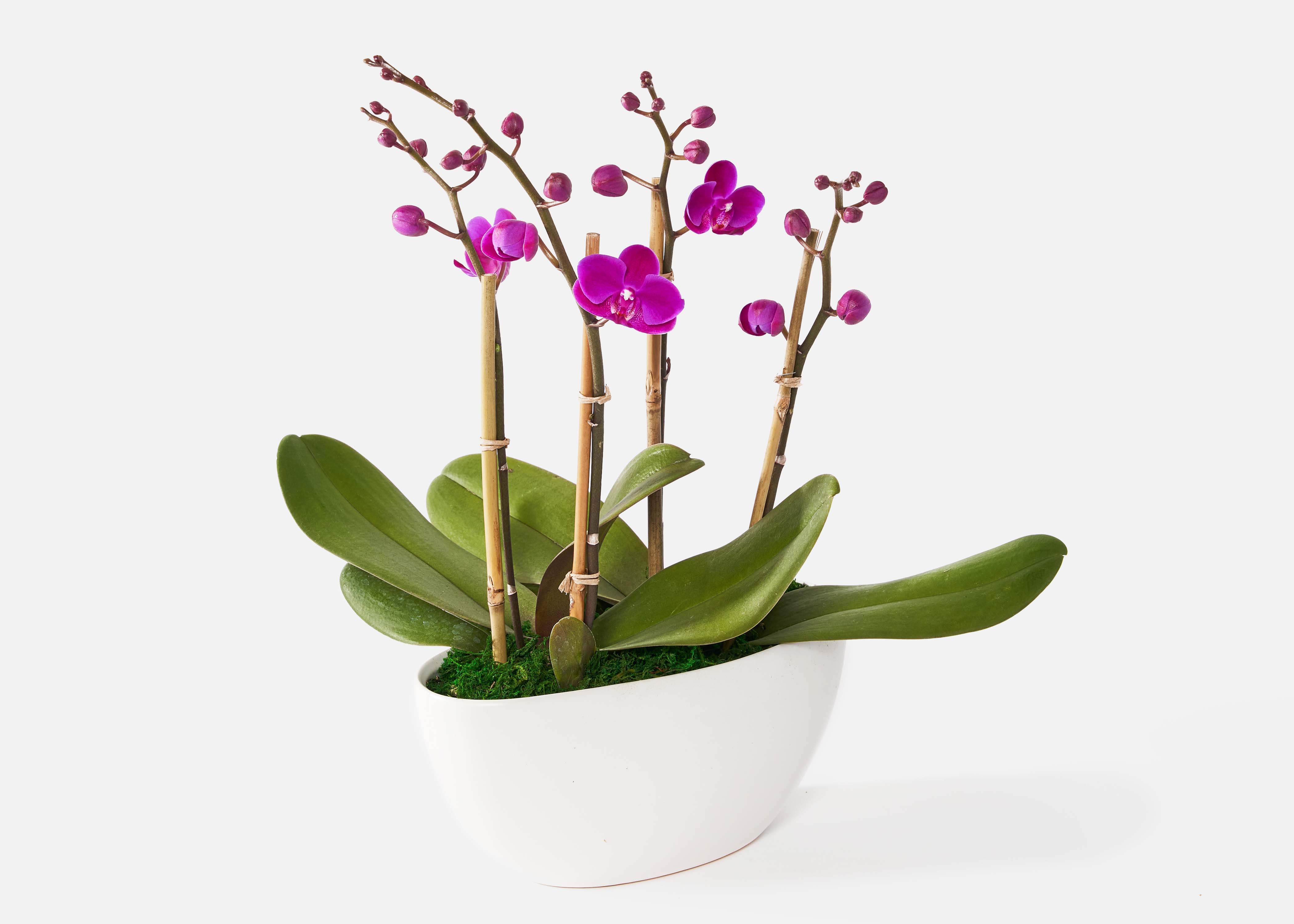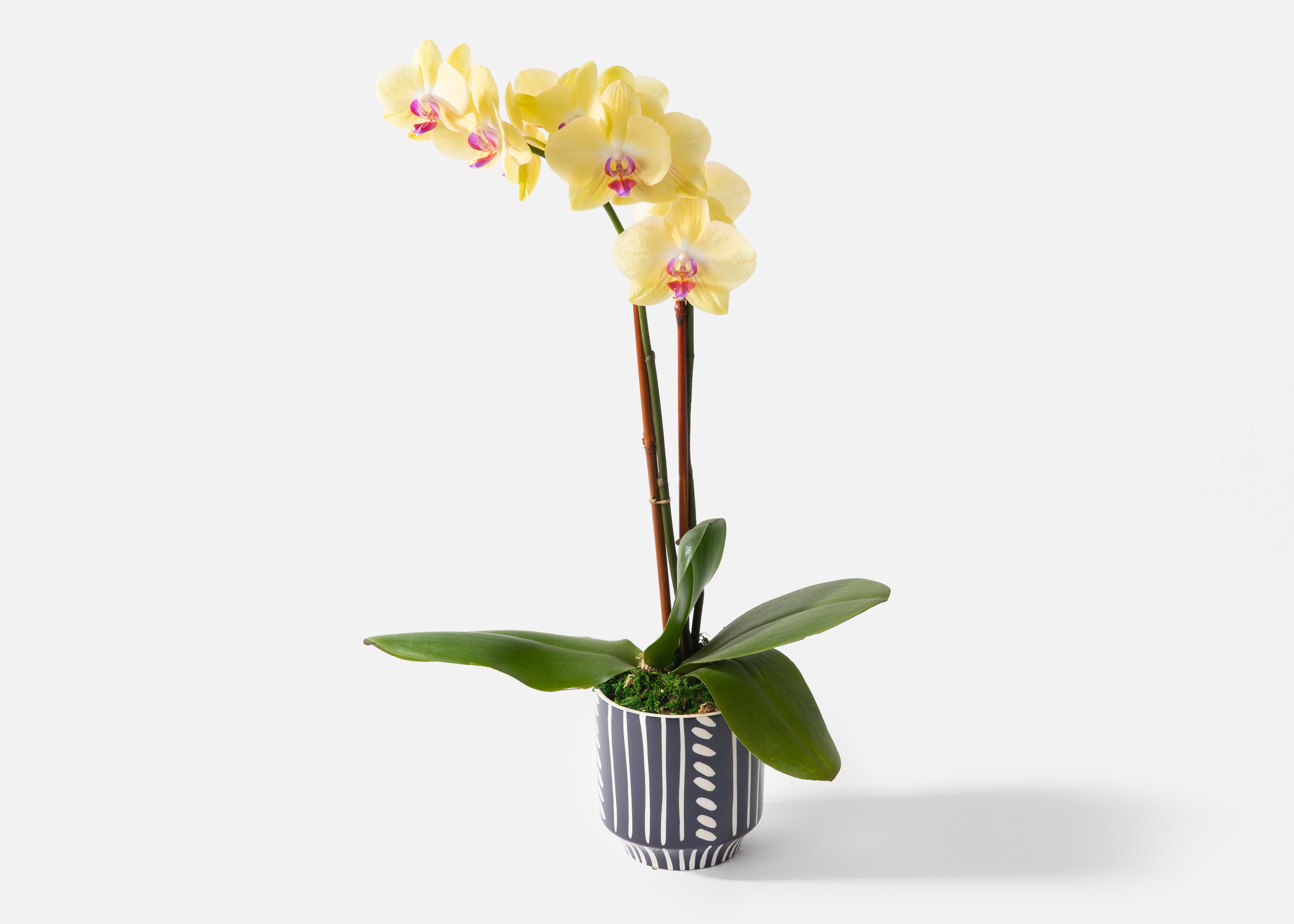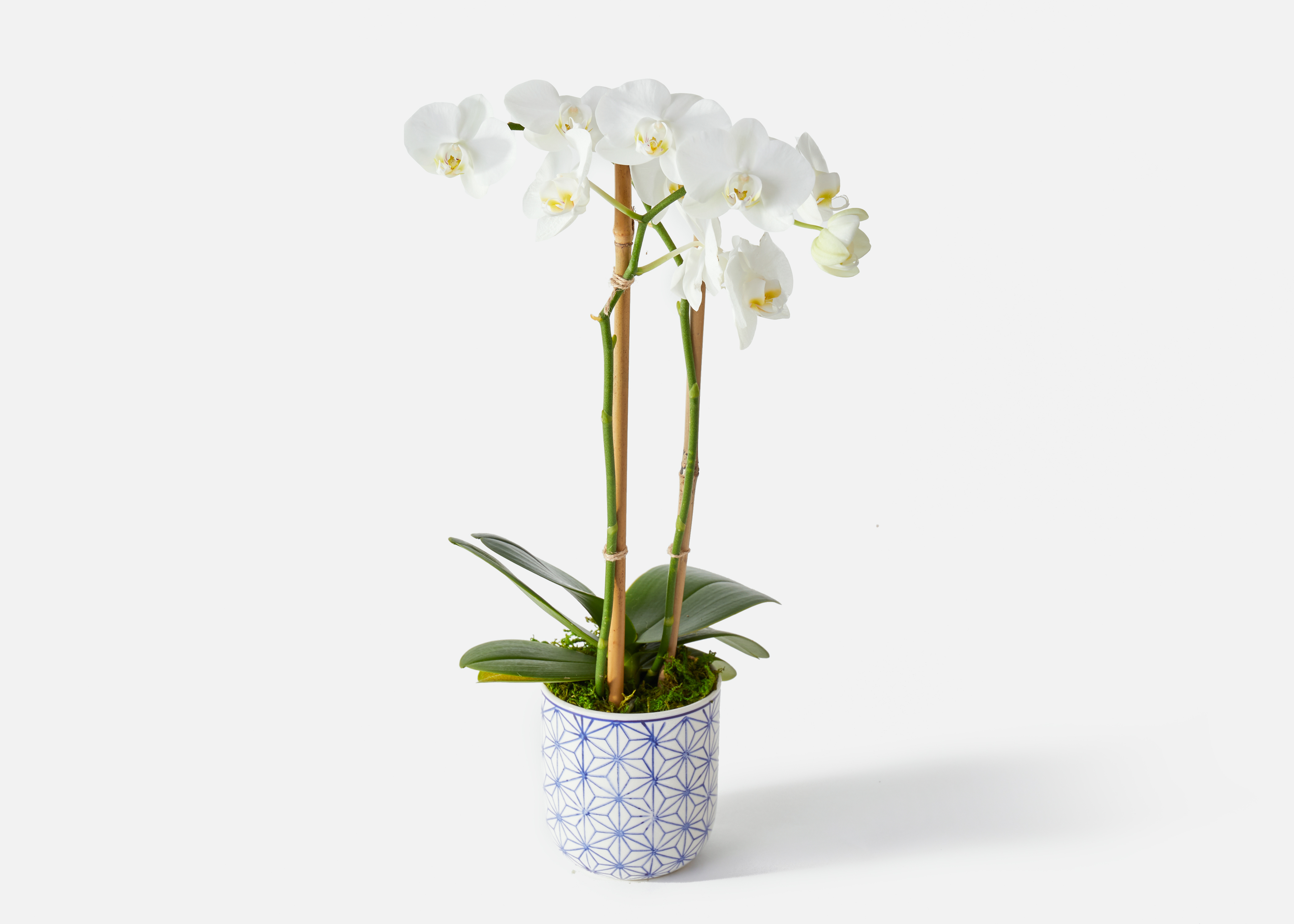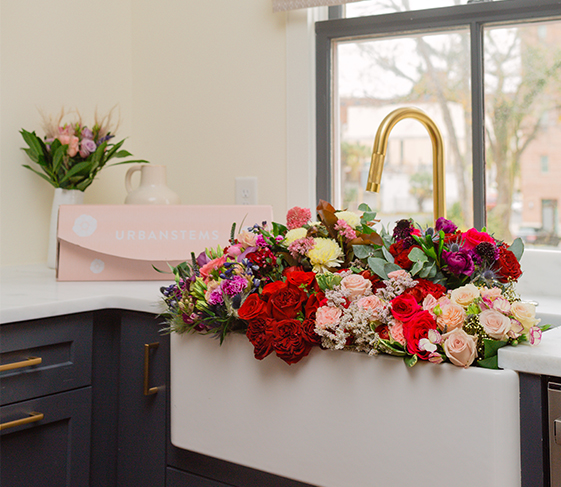With their delicate petals, bright colors, and light fragrance, orchids have fascinated people around the world. Their exotic appearance makes them a sophisticated gift, an elegant centerpiece, and a luxurious indulgence for yourself. Luckily, orchid plants are also easy to care for, so anyone can grow orchids as houseplants and enjoy their beauty and scent.
Even though we think of orchids as rare and exotic, they’re one of the largest families of flowering perennials in the world. The orchid family, or Orchidaceae, has over 25,000 species, found all over the world but especially in humid tropical and subtropical regions. Geologists believe that their origins might go back 100 million years.
Orchids have been used in Chinese medicine to treat coughs and lung illnesses. The vanilla plant, which gives us that delicious flavoring, is also an orchid. But, above all, orchids have been prized for their beauty and rarity, and the plants have been collected, grown, hybridized, and exhibited with passion and devotion by generations of growers.
While there are thousands of varieties of orchids, not all of them are suitable as houseplants. Some of the common varieties you might encounter are:
- Dendrobium orchids originate in Asia, Australia, and Pacific islands. They have white, yellow, or purple blooms and can grow from anywhere between 6 inches to 4 feet in height.
- Vanda orchids are native to east and Southeast Asia. They are commonly grown in baskets and are loved for their purple, fragrant flowers.
- Despite their unromantic name, mule ear orchids are among the most beautiful varieties, with yellow or mixed purple and white flowers.
- For beginners, the best plant is the phalaenopsis orchid, also known as the moth orchid. It has white, purple, pink, salmon, or yellow flowers, and it takes very little effort to keep it fed and watered.
Other easy-to-grow varieties of orchids are cattleya, paphiopedilum, and cymbidium.
At the other extreme, the vanilla orchid (Vanilla planifolia), schomburgkia orchids, and rhynchostylis orchids are best for experienced growers.
Meaning and Symbolism
Cultures around the world have associated different meanings with orchids, ranging from fertility to romance, spiritual perfection, and innocence. Due to their rarity and cost in Europe, they came to be associated with wealth.
In China, orchids are believed to bring good luck and ward off evil spirits. They also represent the innocence of childhood. Many countries and cities have adopted orchids as their symbolic flower, including Venezuela, Singapore, Costa Rica, Honduras, Belize, and the Indian state of Assam.
The color of the flowers also influences their symbolic meanings. White orchids are associated with innocence, and purple flowers with royalty. Pink orchids stand for affection, and yellow for happiness.
How to Gift Orchids
Orchids are always a welcome gift, and they’re very versatile and suitable for any occasion. They carry messages of romance, affection, happiness, and celebration, which makes them perfect for anyone from a romantic partner to a favorite relative.
The Zahra with its classic royal purple blooms in a simple white boat-shaped ceramic planter, is a perfect housewarming gift.. The lively yellow and pink flowers of The Lemon Drop will add cheer to a birthday or anniversary, and The Murano, with its white flowers and graceful stem, is just right as a congratulations gift.
How to Care for Live Orchid Plants
With a little love and understanding, not to mention the right amounts of water, sunlight, and fertilizer, your orchid plant will produce beautiful blooms to add to the beauty of your home.
Water
As with most houseplants, when watering, it’s always better to err on the side of less rather than more. Too much water can hurt the root and stem, making it difficult for the plant to sustain its leaves and blooms.
Allow the potting mix to dry out between waterings. The amount of water each plant needs depends on several factors, including humidity, light, air temperature, and the potting mix used. The plant will need more frequent watering in a home that has a higher temperature or low humidity.
The best way to tell if it’s time to water your orchid plant is to check the condition of the growing mix at a depth of one inch. If it’s dry, the plant needs water; otherwise, you can wait another few days. When you do water, make sure that the container has drainage holes to remove excess water from the roots.
The best way to water your orchid plant is to stand it in the kitchen sink and let lukewarm water soak into the mix for about 15 seconds. Let the plant drain excess water for 15 minutes before removing it from the sink.
You may also want to give your orchid plant a humidity tray, which can be a tray or saucer with gravel or pebbles and water. The pot can be placed on pebbles above the water line to create a humid area without soaking the roots continuously.
Potting Mix
Orchids are usually grown in sphagnum moss or bark chips. While moss has been considered an ideal growing mix because of the way it retains moisture, recently concerns have emerged about its lack of sustainability. Growers are trying to move away from using sphagnum moss to other renewable alternatives, though so far a good replacement has not been found.
Bark dries out quickly, while moss holds moisture for a long time. With bark chips, the plant will have to be watered more frequently. On the other hand, bark has the advantage of letting the excess water drain off quickly, which is good for orchids that need to dry out between waterings. Bark potting mix should be replaced every two years or so.
Light
The best place for an orchid plant is on or near an east-facing window but out of direct sunlight. South-facing windows are a good choice too, but you may need to add a sheer curtain to keep the strong sunlight from burning up the leaves. West-facing windows will be too hot in the afternoons, and north-facing ones are too dark.
You can tell if the plant is getting enough light when the leaves are grass-green in color rather than dark green.
Food
Orchids need to be fed regularly with a fertilizer that contains no urea. You can use the regular plant food you use for other houseplants. As with water, less is better than more. Always water the plant before adding fertilizer.
Once you’ve been caught by the fascination of orchids, you may find that it becomes a lifelong passion. These plants will repay your care with beauty and fragrance. Orchids also make elegant, striking gifts for almost anyone for any occasion.
FEATURED PRODUCTS








